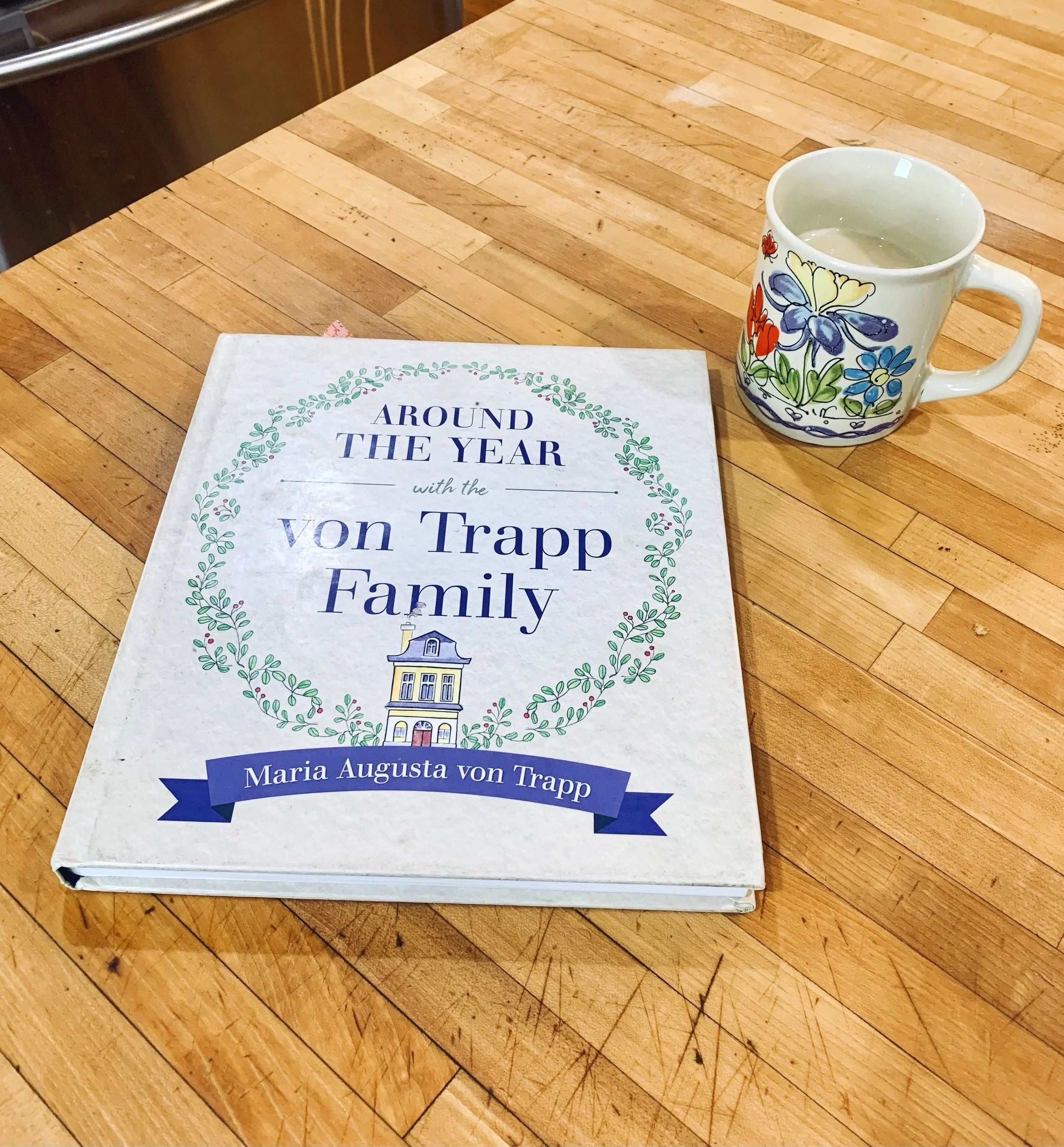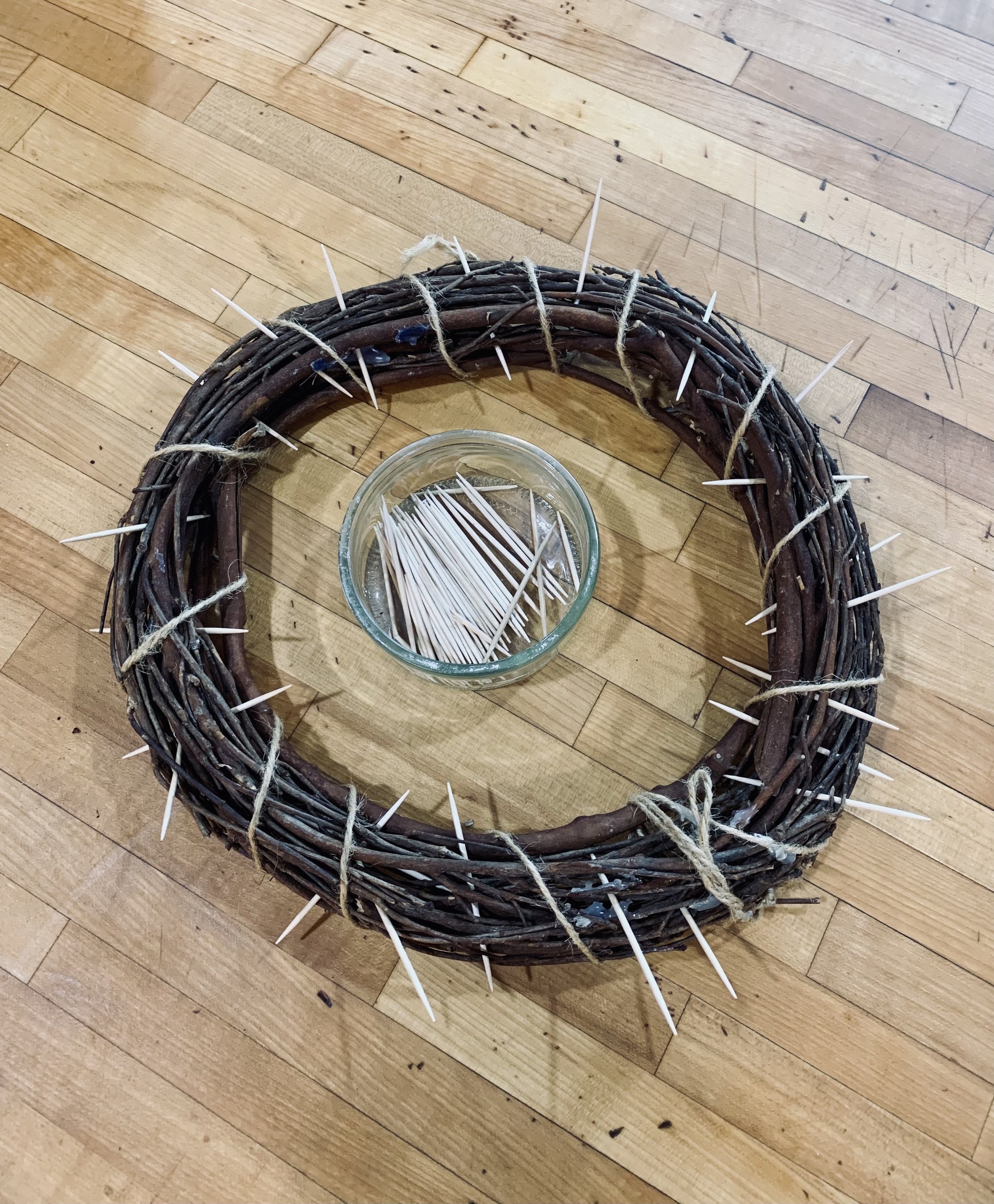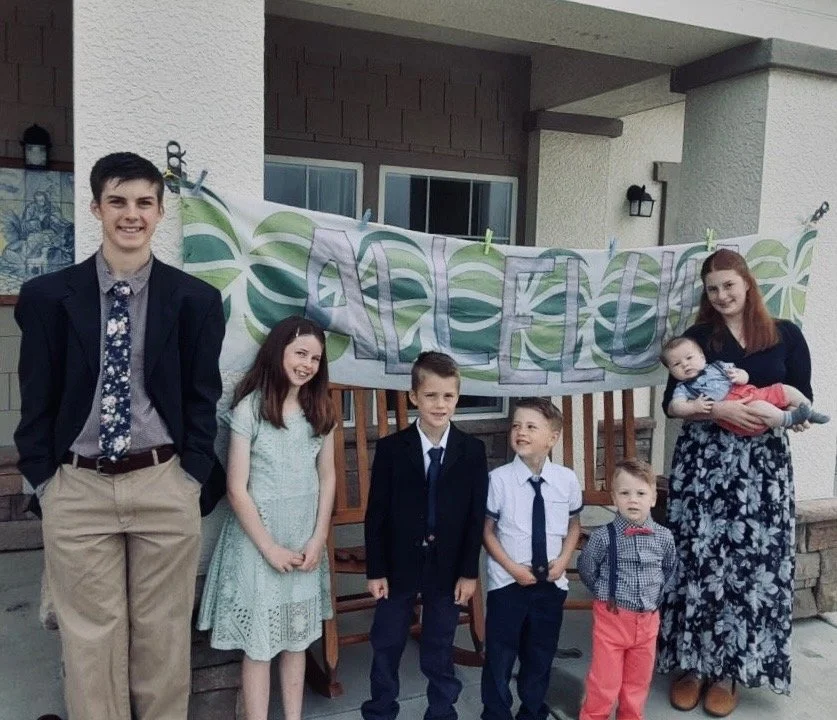Talking with Shannon Lange on Life, Lent and Living Liturgically
In a rural Connecticut town, I met Shannon Lange in a bright little circle of Catholic fellowship. Preparing for Advent and then Lent together, fellowship became new friendship. Shannon and her husband Josh have eight children ranging from college freshman to toddler. They live on an idyllic farm with goats and bunnies. With my seven kids, we have lots of age matches and a mutual love for living out the liturgical seasons of the church with our families. But in a twist in the path, Shannon and her family are moving to North Carolina. Josh has been transferred to the Naval Hospital in Jacksonville to work with their Education and Training department. After our last Catholic Ladies Round Table event, where Shannon shared both her beautiful Lenten traditions and the bittersweet news that they were moving, we made plans to meet up so that these traditions could be shared beyond Connecticut.
Perhaps Shannon’s calmness is due to what she refers to as “the luxury of doing this very often,” as she tells me about repeatedly falling in love with a community only to leave it. “Actually, normally the first year we hate the community, then we love the community and then God says now you have to move. This time it was a faster turn around. We dived into the community very quickly. We have many friends that we have established and it’s hard to leave. But everywhere we leave, we stay in touch with many people. We have friends all over the world and I am so grateful for it. We have people all over the world that pray for us when we are struggling so there is beauty there.” There is beauty in her perspective. “Realistically, we certainly have our frustrating moments where we are griping at each other because we are just nervous about what it’s going to look like. You just never know until you get there. But the truth is we have never, in the every three years that we have moved to a new place, we have never been led to a new place that wasn’t perfectly provisional. We look back at it later and say, ‘Absolutely, Lord, thank you!’ It’s funny that we forget. Each time we are like, ‘God, what are you doing?’ And then later we say, ‘Thank you, Lord, thank you for doing it!’
I am thankful for even this brief time with Shannon in Connecticut to connect, to learn and to share traditions. Shannon credits Maria Augusta von Trapp’s book Around the Year with the von Trapp Family for several of these traditions. It is a beautiful book. Spoiler: I’ve already added it to my home library.
Lenten Library
Shannon explains how to cultivate a Lenten library: “You want to pick three different books for the Lenten season. You want to grow your heart, soul and mind. Of the three books that you are picking, one is biographical or autobiographical about a saint, their life and how they lived. This book is to grow you in the awareness of the people that we are using as mentors. The second book is to grow your heart in terms of your love for the church and love for scripture. You find something by a saint or another great author that describes our faith, growth and reflection. The third book is to grow your mind, something meaty and something you might chew on. For example, you might pull out your Thomas Aquinus here and start wrestling with that. Even the kids usually pick one book from each of these categories. A lot of them gravitate towards the biographies of the Saints that Ignatius puts out and they are fantastic.”
Each year on Ash Wednesday, she gathers together books from all three categories, for each age group. Shannon readily admits to not usually having time herself to finish entire books but instead gleans enrichment in snippets. As presented in Around the Year with the von Trapp Family, Maria Von Trapp’s idea is that whatever you are fasting from timewise during Lent, you can use that extra time to read.
Crown of Thorns
Shannon shows me the crown of thorns on their kitchen countertop. This tradition is also drawn from Maria Von Trapp’s book. “It is simply a grapevine wreath, you can get them at Michael’s or Hobby Lobby or make them yourself. After they’re bound together, we stack them full of toothpicks to represent the thorns. We restack it when it gets empty. The idea behind the thorns is similar to adding straw to the creche at Christmas through kind deeds. Except now we are removing the thorns to console the heart of Christ. When something is done through kindness or charity, an everyday, intentionally good deed, like reading a book to a younger sibling or helping to make a bed, a thorn is removed. Some of the kids that feel a little more legalistic will add a thorn if they have a bad day, showing that we can add to the thorns of Christ when we are choosing to not be charitable.” As the little good deeds accumulate, the thorns are removed helping prepare for the joys of Easter.
Seeds of Lent
Shannon’s family has been doing the seeds of Lent for over a decade. The idea behind this Lenten tradition is that “our sacrifices are redemptive. They are beautiful. What we are doing as we give something up is turning our hearts back to Christ. That has powerful work both in our lives and the lives of people around us.”
Shannon explains how the two mason jars work. “One jar holds the seeds that the kids are depositing into the other jar for each action that they have committed to give up for Lent. Some of the kids will choose to do something for Lent instead of sacrificing something. If they have accomplished their intended sacrifice or kind deed, then they get to put a bean or a seed into the jar.”
The first year they used sunflower seeds and “at the end of the season of Lent, we planted those seeds. Seeing the flowers that grew reminded us that those actions that we make, those sacrifices we make, grow into beautiful things.” A tangible garden of good deeds. As a family, they have done other projects matching the number of seeds given. One year they matched 120 seeds with 120 sandwiches for a homeless shelter. The kids made an assembly line to put together the sandwiches and then delivered them. In this way, Shannon explains, “they could see that their sacrifices blessed other people.”
Burying the Alleluia
As Shannon tells me the name of this tradition, one of her sons looks up in surprise upon hearing the word being spoken during Lent. “We do bury the Alleluia in our home and have done this for years. Inspired by the catechesis of the Good Shepherd, an act that they do in their atriums and in their foundational work. Since we don’t say Alleluia during the Mass starting right before Lent, we also remove it in our home.” They have a banner which Shannon cannot show me because it is already buried outside for the Lenten season. The banner is over six feet long with fabric letters that say Alleluia. “Every year the kids color their sacrifices with washable markers onto the banner and other things that help them think of Easter and Christ rising from the dead. Then we fold it up, put it in a plastic bag and we actually bury it in the dirt. At Easter, before the morning dawns, usually the night before, Josh and I will go and unearth the Alleluia and wash it and hang it on the front of the house. When the kids wake up, we light every candle and go through the house with bells, singing the Alleluia. Alleluia is the Hebrew word for Victory, the proclamation of Victory. Removing that from the Mass and our everyday reminds us of what it cost, that sacrifice of Easter cost something.”
As we finish our tea Shannon concludes that “these have been the things that have really stuck in our family and have been blessings throughout our Lenten season.” In years to come, as we pull out a thorn or add a seed to the mason jar or dig up the Alleluia before Easter dawns, it will be because Shannon shared these blessings as she travelled. “Our kids don’t feel like they are linked to only one place in the world,” Shannon says, “they are linked to a community much bigger than just themselves and one tiny point of space. There is a great gift there.” After the Langes dig up the Alleluia from the Connecticut dirt and travel south to North Carolina, the traditions, prayers and points of connection will continue to grow.







